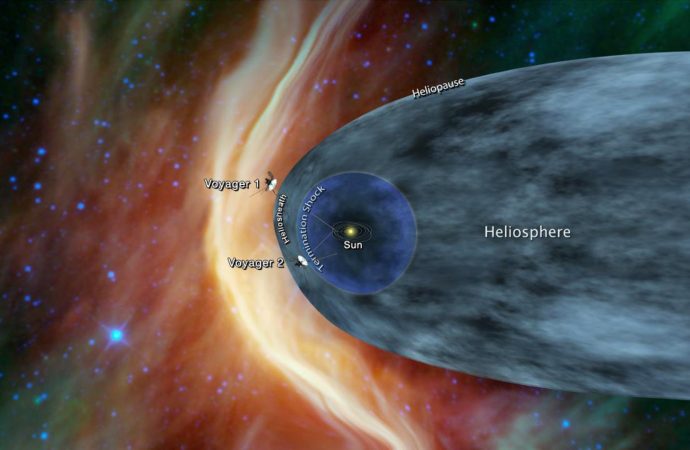NASA’s Voyager 2 spacecraft has detected an increase in cosmic rays that originate outside the Solar System. Currently, the probe is approximately 11 billion miles (17.7 billion km) from Earth.
Voyager 2 was launched on August 20, 1977, from the NASA Kennedy Space Center at Cape Canaveral in Florida, propelled into space on a Titan/Centaur rocket.
The initial mission plan for the spacecraft specified visits only to Jupiter and Saturn. The plan was augmented in 1981 to include a visit to Uranus, and again in 1985 to include a flyby of Neptune.
Since 2007 Voyager 2 has been traveling through the outermost layer of the heliosphere, a comet-like bubble around the Solar System dominated by solar material and magnetic fields.
NASA scientists have been watching for the probe to reach the outer boundary of the heliosphere, known as the heliopause.
Once Voyager 2 exits the heliosphere, it will become the second human-made object, after Voyager 1, to enter interstellar medium.
Since August 2018, Voyager 2’s Cosmic Ray Subsystem instrument has measured about a 5% increase in the rate of cosmic rays hitting the spacecraft. Its Low-Energy Charged Particle instrument has detected a similar increase in higher-energy cosmic rays.
“Cosmic rays are fast-moving particles that originate outside the Solar System,” the NASA researchers explained.
“Some of these cosmic rays are blocked by the heliosphere, so we expect that Voyager 2 will measure an increase in the rate of cosmic rays as it approaches and crosses the boundary of the heliosphere.”
In May 2012, Voyager 1 experienced an increase in the rate of cosmic rays similar to what Voyager 2 is now detecting.
That was about three months before Voyager 1 crossed the heliopause and entered interstellar medium.
“However, the increase in cosmic rays is not a definitive sign that the probe is about to cross the heliopause,” the scientists said.
“Voyager 2 is in a different location in the heliosheath — the outer region of the heliosphere — than Voyager 1 had been, and possible differences in these locations means Voyager 2 may experience a different exit timeline than Voyager 1.”
“We’re seeing a change in the environment around Voyager 2, there’s no doubt about that,” said Voyager project scientist Dr. Ed Stone, a researcher at Caltech.
“We’re going to learn a lot in the coming months, but we still don’t know when we’ll reach the heliopause. We’re not there yet — that’s one thing I can say with confidence.”
Source: Sci News

































Leave a Comment
You must be logged in to post a comment.